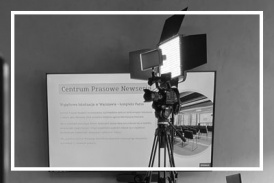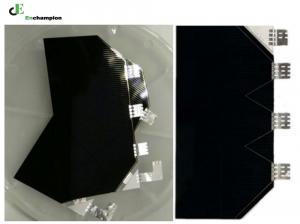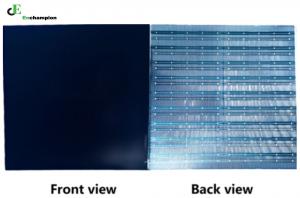Enchampion matures the GaAs solar panel solution with best cost and performance for space applications
Industry Challenges
In the aerospace sector, high-efficiency and reliable solar cells are critical for ensuring satellite longevity. Triple-junction gallium arsenide (GaAs) cells have become the preferred solution for high-value space missions due to their exceptional conversion efficiency and superior radiation resistance. However, the widespread adoption of conventional GaAs technology has been constrained by prohibitively high manufacturing costs.
Aerospace solar cell technology has long faced two core issues. First is the cost barrier—GaAs material growth (MOCVD process) and substrate expenses significantly exceed silicon-based materials, with germanium substrate costs accounting for over 40% of total production. Second is technical complexity, including demanding lattice matching and current balancing requirements, as well as precise control needed for 6-8μm epitaxial growth.
Notable Breakthroughs: Balancing Performance and Cost
Facing these technical challenges, Enchampion, a company focused on aerospace energy product research and development, has optimized the epitaxial process through a series of innovations, significantly reducing costs while maintaining high performance.
These technical breakthroughs are manifested in three key areas:
High-Speed Multi-Wafer MOCVD Growth
The research team utilizes self-optimized multi-wafer MOCVD equipment, increasing epitaxial growth rate by 50% while significantly reducing single-wafer processing time and boosting production capacity. Through AI real-time monitoring of gas flow and temperature distribution, they ensure epitaxial layer uniformity (variation <±2%), achieving breakthrough yield rates exceeding 95%.
Silicon Substrate Replacement and Reuse Technology
The team has developed silicon-based GaAs epitaxial technology, resolving lattice mismatch issues through buffer layers, significantly reducing substrate costs. They have also created a laser lift-off process to enable Ge substrate reuse, further reducing material costs.
High-Efficiency Design Optimization
The optimized InGaP/GaAs/InGaAs triple-junction structure achieves 30% AM0 efficiency with <5% annual degradation rate (15-year lifespan), meeting the long-life requirements of satellites.
Broader Aerospace Energy Solutions
Beyond triple-junction GaAs solar cells, the company also offers extremely low-cost silicon-based solar cells, flexible thin-film solar cells, and BC back-contact solar cells (optimized for HAPS). They have established cooperative relationships with mainstream satellite and HAPS customers, and continue to innovate and develop new technologies, having made significant progress in perovskite tandem solar cells, which have now completed space environment verification and are planned for commercial product launch by the end of 2025.
In addition to solar cells, the company possesses professional aerospace battery products, including cost-effective COTS lithium-ion and sodium-ion aerospace batteries for LEO applications, and specialized aerospace batteries for GEO applications. In the aviation sector, they offer high-energy-density and high-power battery products suitable for electric and hybrid eVTOLs, small fixed-wing aircraft, helicopters, and commercial airplanes.
Shaping New Standards for Aerospace Energy Products
With the rapid development of commercial space, technological breakthroughs that reduce the cost of key components such as solar cells will have a significant impact on the entire industry. Such innovations make "high efficiency, reliability, and low cost" aerospace energy solutions possible, creating more opportunities for commercial space and clean energy.
About Enchampion Aerospace Technology
Enchampion is a high-tech enterprise focused on the R&D and production of high-efficiency, low-cost aerospace energy products, committed to providing comprehensive energy solutions for the global space and aviation sectors. For more information, visit www.enchampion.com or email marketing@enchampion.com.
Mike ZHAO
Enchampion Aerospace Technology Co., Ltd
email us here
Visit us on social media:
X
LinkedIn
Legal Disclaimer:
EIN Presswire provides this news content "as is" without warranty of any kind. We do not accept any responsibility or liability for the accuracy, content, images, videos, licenses, completeness, legality, or reliability of the information contained in this article. If you have any complaints or copyright issues related to this article, kindly contact the author above.
Zafir Rashid launches international destination district with over one billion in planned investment
A Showcase of Timeless Classics and Bold Debuts at Inks & Bindings’ Booth at the 2025 LA Times Festival of Books
JAWS - 50th ANNIVERSARY CELEBRATION FESTIVITIES
Kalendarium
Więcej ważnych informacji
 Jedynka Newserii
Jedynka Newserii

 Jedynka Newserii
Jedynka Newserii

Handel

Niepewność gospodarcza rosnącym zagrożeniem dla firm. Sytuację pogarszają zawirowania w światowym handlu
Wojna handlowa i trudna sytuacja geopolityczna stanowią zagrożenie dla funkcjonowania firm. Niepewność sytuacji gospodarczej to obok wysokich kosztów pracowniczych najczęściej wskazywana bariera utrudniająca działalność. 60 proc. właścicieli i zarządzających firmami w Polsce uważa ją za największe zagrożenie. – Kryzysy są tyleż szokiem dla systemu, co szansą. Jeśli wykorzystamy nowo tworzące się sytuacje, mamy szansę wyjść wzmocnieni – ocenia Małgorzata Mroczkowska-Horne, dyrektor generalna Konfederacji Lewiatan.
Transport
Ataki cybernetyczne na kolej stają się coraz częstsze. Hakerzy zwykle chcą doprowadzić do paraliżu

W pierwszym kwartale tego roku hakerzy zaatakowali systemy sprzedaży biletów w polskiej i ukraińskiej kolei. Zagrożenia wiążą się jednak również z atakami na systemy zasilania i zarządzania ruchem. Wszystkie tego typu zdarzenia mają jeden cel – mniejszy lub większy paraliż transportu kolejowego, co w obecnej sytuacji geopolitycznej przekłada się na bezpieczeństwo strategiczne. W wielu przypadkach wciąż najsłabszym ogniwem jest człowiek – albo dlatego, że nienależycie chroni hasła i dostęp do urządzeń, albo dlatego, że nadane mu uprawnienia są nieadekwatnie szerokie w stosunku do realnych potrzeb.
Edukacja
Polska nauka potrzebuje różnych źródeł finansowania. Trwają rozmowy o zmianach w systemie

– Finansowanie polskiej nauki wymaga zmian, ale do tego potrzeba politycznej woli i odwagi – ocenia prof. dr hab. Grzegorz Mazurek, rektor Akademii Leona Koźmińskiego. Wśród propozycji wymienia stworzenie systemu zachęt dla biznesu do inwestowania w naukę i edukację, wyznaczenie strategicznych obszarów badań, na które będą trafiały fundusze, czy rozliczanie instytucji naukowych z wykorzystania publicznych pieniędzy. W ramach cyklu „Porozmawiajmy o polskiej nauce” MNiSW w ostatnich miesiącach prowadzi konsultacje ze środowiskiem akademickim i badawczym na temat stojących przed sektorem wyzwań i możliwych do wdrożenia rozwiązań, nie tylko dotyczących finansowania.
Partner serwisu
Szkolenia

Akademia Newserii
Akademia Newserii to projekt, w ramach którego najlepsi polscy dziennikarze biznesowi, giełdowi oraz lifestylowi, a także szkoleniowcy z wieloletnim doświadczeniem dzielą się swoją wiedzą nt. pracy z mediami.









.gif)

 |
| |
| |
|